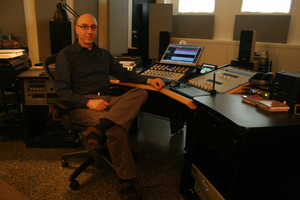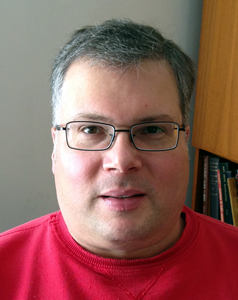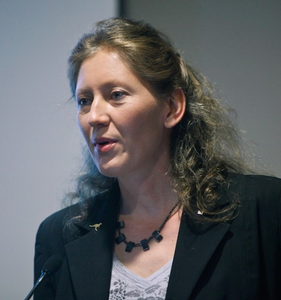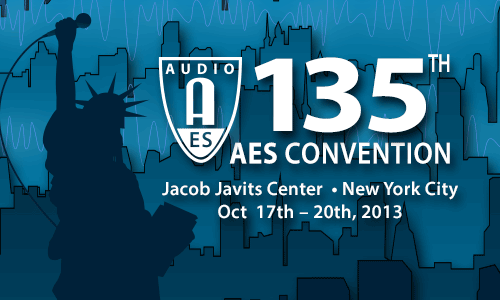
AES New York 2013
Historical Event Details
Friday, October 18, 5:00 pm — 6:30 pm (Room 1E13)
The Art of Recording the Big Band, Revisited
Presenter:Robert Auld, Auldworks - New York, NY, USA
Abstract:
The jazz big band was born in the 1920s, came of age in the 1930s, enjoyed its greatest popularity in the 1940s, and went into popular decline in the 1950s. In the 1960s the big band enjoyed a comeback of sorts but was displaced from the front pages by The Beatles and other things. In the 1970s it looked like the big band would either expire, or be transformed out of recognition. And yet, it persists; people still play in big bands, still dance to them, still record them. It has proved a most durable ensemble.
In his presentation Robert Auld will survey the history of jazz big bands, both from a musical and a technical, recording point of view. He will also show how he recorded a modern big band in 2011, using techniques typical of recording sessions in the "golden age" of stereo in the late 1950s. The presentation will include photos and recorded examples.
Saturday, October 19, 12:15 pm — 1:15 pm (Room 1E11)
Restoring Peggy Lee’s Capitol Records Album “Jump for Joy”
Presenter:Alan Silverman, Arf! Mastering - New York, NY, USA; NYU|Steinhardt Dept.of Music Technology
Abstract:
“Jump for Joy,” featuring Peggy Lee and arranged by Nelson Riddle, was one of the first records released by Capitol as a stereo LP. The year was 1959, the year the label first made stereo LPs available to the public, but this seminal album was never released in stereo on CD, only in mono. An assignment to master the original stereo mixes for digital release led to the discovery of a 54-year old audio mystery. Had something gone awry at the original stereo mix date? This special event uses photos and high-resolution transfers of original session material to detail a surprising finding and the steps that were taken to reach back in time to restore the album for today’s audience as it was intended to heard.
Saturday, October 19, 5:00 pm — 7:00 pm (Room 1E09)
The 35mm Album Master Fad
Presenter:Thomas Fine, (sole proprietor of private studio) - Brewster, NY, USA
Abstract:
In the late 1950s and early 1960s, a new market emerged for ultra-high fidelity recordings. Once cutting and playback of the stereo LP were brought up to high quality levels, buyers of this new super-realistic format wanted ever more "absolute" sound quality. The notion emerged, first with Everest Records, a small independent record label in Queens, to use 35mm magnetic film as the recording and mastering medium. 35mm had distinct advantages over tape formulations and machines of that time—lower noise floor, less wow and flutter, higher absolute levels before saturation, almost no crosstalk or print-through, etc. Everest Records made a splash with the first 35mm LP masters not connected to motion-picture soundtracks but quickly faltered as a business. The unique set of recording equipment and the Everest studio remained intact and was used to make commercially successful 35mm records for Mercury, Command, Cameo-Parkway, and Project 3. The fad faded by the mid-60s as tape machines and tape formulations improved, and the high cost of working with 35mm magnetic film became unsustainable. The original Everest equipment survived to be used in the Mercury Living Presence remasters for CD. Just recently, the original Everest 35mm recordings have been reissued in new high-resolution digital remasters. This presentation will trace the history of 35mm magnetic recording, the brief but high-profile fad of 35mm-based LPs, and the after-life of those original recordings. We will also look at the unique set of hardware used to make the vast majority of the 35mm LPs. The presentation will be augmented with plenty of audio examples from the original recordings.
Sunday, October 20, 1:00 pm — 2:00 pm (Room 1E14)
A Contribution to the History of Field Tape Recording, 1939-1940
Presenter:Nadja Wallaszkovits, Phonogrammarchiv, Austrian Academy of Science - Vienna, Austria
Abstract:
Digital Transfer of The Armando Leça Folk Music Collection
Nadja Wallaszkovits will discuss the restoration, transfer, and digitization of a unique collection of folk music recorded during 1939-1940 in the rural areas and mountain villages of Portugal by the folklorist Armando Leça, in collaboration with National Radio (Emissora Nacional). Her presentation will open with a short introduction of this important field research project, which resulted in the first known collection of recordings documenting rural musical practices from nearly all regions of Portugal. Thereafter, she will present a historical overview of early magnetic tape developments and the birth of audio tape recorder technology, focusing on the characteristics of the individual tape machine used by Armando Leça. The problems of carrier handling, restoration, and transfer of these valuable original tapes will be discussed, along with the judicial use of signal enhancement during the playback process.



